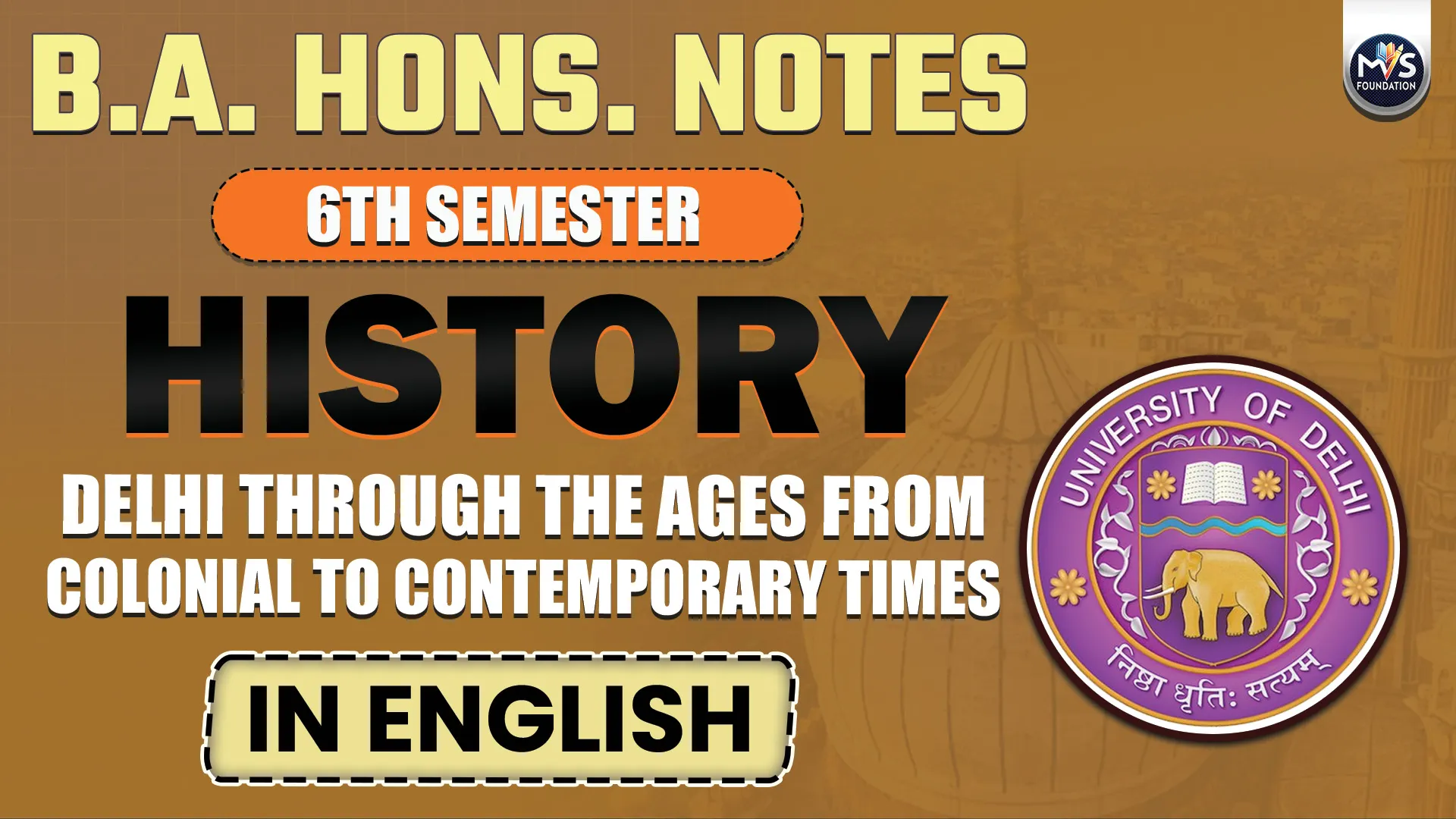
Get in Touch
We will get back to you within 24 hours.
Welcome to MVS Blog

Q 1. Discuss the cultural and social life in Delhi during the 19th century.
Answer -
Introduction
The cultural life of Delhi in the 19th century was based on religiosity, art, culture and style. Religious rituals, temples and religious institutions had a great influence. During the Mughal rule, many famous mosques such as Jama Masjid, Badi Masjid and other historical sites were built in Delhi. The Mughal emperors encouraged art and cultural upliftment, making Delhi's cultural landscape rich in diversity.
Cultural and social life in 19th century Delhi:
Cultural development developed in Delhi during the 19th century. Mughal emperors such as Akbar, Jahangir and Shah Jahan played an important role in cultural development and social life. These emperors gave encouragement in the field of art, literature, music and culture. This era also saw the spread of music, poetry and stories, creating a rich cultural environment.
According to the Delhi Gazette, only the main roads of Delhi were well maintained.
The roads behind were in a dilapidated condition. The Delhi Bank gave a loan to the local road committee to carry out the repair work. The Delhi Gazette lamented the lack of philanthropic zeal among the Hindu residents (who were reluctant to contribute to the repair of the road). Only a few prominent persons such as Raja Hindu Rao, Ahmed Ali Khan and the Rajas of Pataudi and Ballabhgarh came forward to contribute to the public exchequer. A ganj was established in the western suburbs with the financial help of Diwan Kishan Lal.
Public Health, Drinking Water and Irrigation:
There was clearly a major concern in the minds of public health administrators. The issue was related to water supply and drainage. There was cholera and saline water of ponds in Delhi. Ali Mardan Canal which was first attempted to revive it by the city of Mercer with their own funds.
Charles Metcalfe inaugurated the renovated canal in 1821 to provide safe drinking water to the residents. People were so ecstatic that they worshipped the water flowing with flowers and ghee. However, the euphoria did not last long, as farmers upstream exploited it so much for irrigation that the canal soon dried up. The availability of healthy water from the canal in the eighteen twenties and eighteen thirties led to the neglect of existing wells. As a result, 555 out of 607 wells were desalinated.
At the behest of Lord Ellenborough, a water tank named Lal Diggi was constructed which was to be connected to the canal and act as a reservoir. However, the inability to handle the drain led to a malfunction and resulted in flooding of the city.
The Public Health:
Public health was a serious concern and various measures were considered from time to time. Napier wrote, That "A tough police force to keep the city clean, hygiene rules about irrigation from the canal, banks kept clean to prevent malaria, all this will probably make Delhi healthier than any part of India."
The need to set up a dispensary was also felt. Private contributions from merchants, bankers and members of the royal court increased to Rs 10,000, while Rs 2,500 was added by the government. The 1850 Act gave the government the right to levy taxes to be spent on public health, although Metcalfe writes that people resisted this scheme of taxation.
Conclusion
The city of Delhi that we see today has a very complex history. It saw the transition from Mughal to British rule during the nineteenth century. During the suppression of the Revolt of 1857, major architectural landmarks of Shahjahanabad suffered heavy damage.
0 Response